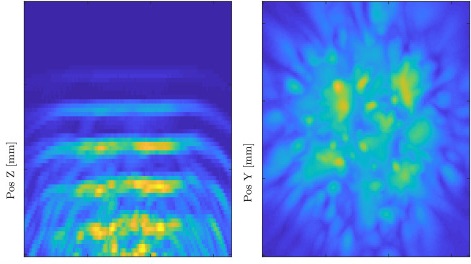Air coupled ultrasonic defect detection in polymer pipes
Arno Römmeler, Roman Furrer, Urs Sennhauser, Bastian Lübke, Jörg Wermelinger, Antonio de Agostini, Jürg Dual, Peter Zolliker, Jürg Neuenschwander
NDT & E International published online 17. Dec. 2018
Abstract
Ultrasonic, non-contact defect detection for polymer pipes can provide an easy and reliable method to establish on site quality control without destructive mechanical testing and finally may help to prevent damage from leaking pipes. The target is to inspect thin walled polymer pipes made of PVDF and PP with small defects in the pipe wall. Air coupled transducers with a nominal frequency of 200 kHz are used to excite Lamb waves in the pipe wall that interact with potential defects. A reference measurement on a flawless part of the pipe helps to mitigate the effects of geometrical and material inhomogeneities. The possibility to excite only the A0 Lamb wave mode in thin plates and pipes using air coupled transducers is shown. Defects attenuate the propagating Lamb waves, resulting in a characteristic pattern in the receiver signal. Simulations on the Lamb wave propagation help to identify the dispersion parameters and allow to understand the effect of defects better. The detection of defects is challenging because of other imperfections in the specimen. With a reference measurement the detection of defects down to a size of 1 mm is possible.)

